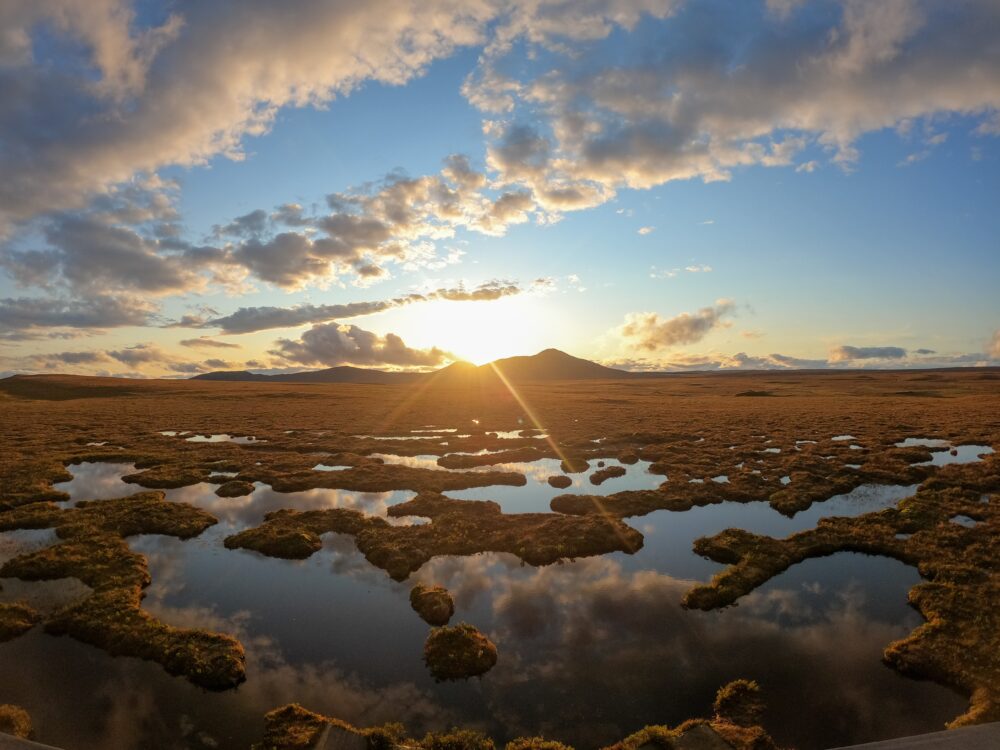This website uses cookies so that we can provide you with the best user experience possible. Cookie information is stored in your browser and performs functions such as recognising you when you return to our website and helping our team to understand which sections of the website you find most interesting and useful.
Understanding Peatlands
Peatlands provide essential ecosystem services such as carbon storage, water regulation, and habitat for a diverse range of plant and animal species. However, these precious habitats are under threat due to the long-term impacts of drainage, over grazing, burning and inappropriate afforestation.
To reverse these adverse impacts, and conserve the invaluable benefits of peatlands, Tilhill undertakes peatland restoration services to restore and protect these vulnerable ecosystems.
The UK has nearly 3 million hectares of peatlands, however only 20% remain in a near natural state and 80% are degraded causing them to emit rather than store carbon. Peatlands are ecosystems which form ‘Peat’ over thousands of years from decaying plants and mosses.
In the UK, three broad peatland habitats exist:
Blanket Bogs
Peatland habitat associated with, and fed by, high rainfall. Blanket bogs are globally rare, with the UK having 20% of the world’s blanket bog resource.
Learn MoreRaised Bog
Peatland habitat forming deep peat in low lying areas, especially in floodplains or basins, identified by domes of peat. Like blanket bogs, they are mainly rain-water fed systems.
Learn MoreCase Studies
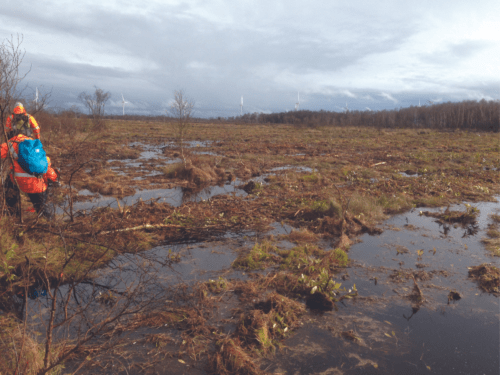
Humberhead Peatlands National Nature Reserve
The aim of this project was to remove large areas of birch and rhododendron to reduce water loss through evapotranspiration, allowing the water level to rise in association with an element of soft engineering to prevent further regrowth and scrub colonisation
Read MorePeatland Restoration Techniques and Approaches
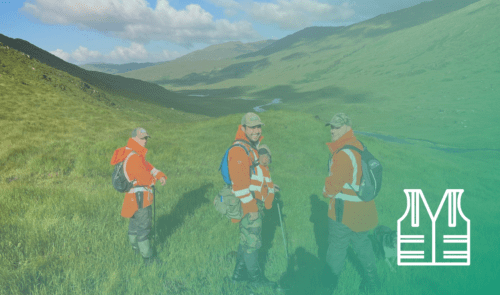
Tilhill's Approach
Tilhill begins by surveying the peatland to understand the extent of the damage and restoration works needed. The surveys are undertaken by foot and drones to identify peat depths, the extent and direction of flow of drainage systems, areas of exposed peat (hagging), and type and area of non-native vegetation.
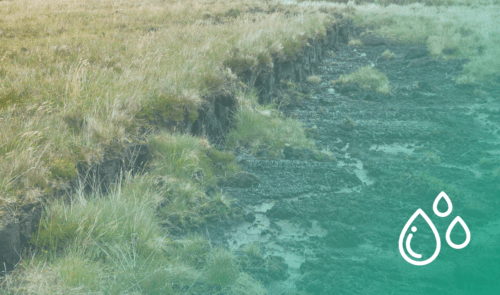
Re-Wetting and Water Management
One of the key approaches to peatland restoration is re-wetting the area by restoring water levels to at or near the surface of the bog. By blocking historic drainage channels and creating dams, the water table can be raised which encourages the growth of peat-forming vegetation, reduces carbon emissions and in time the active bog may begin to sequester carbon.
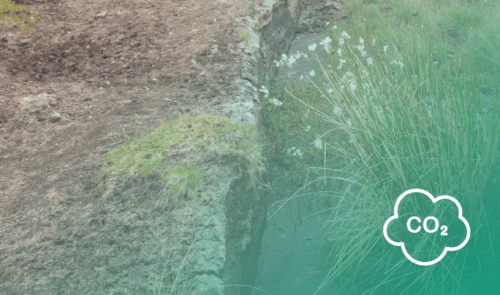
Re-Profiling
Many blanket bogs have exposed peat (called haggs). Exposed peat oxidizes to release its store of carbon and is also subject to erosion leading to downstream impacts such as discoloration of public water supplies. Re-profiling involves revegetation of these areas using vegetation from the site. Once re-profiled, carbon emissions and loss of peat from the site are reduced.
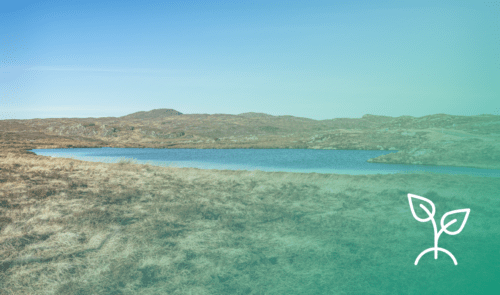
Vegetation Removal
Many peatland sites have, in the past, been subject to afforestation by non-native conifers. This adversely affects water levels and peatland vegetation. Removal of non-native vegetation associated with ditch blocking is a key restoration technique undertaken by Tilhill.
Stakeholders and Partnerships in Peatland Restoration
Government Agencies
Government agencies are providing millions of pounds in funding and grants to drive peatland restoration projects forward. There are different grants available in Scotland, England and Wales which Tilhill has the expertise to navigate. We design the restoration projects and apply for the funding on the landowner’s behalf.
Local Communities
Local communities play a crucial role in peatland restoration. Involving local communities ensures that restoration efforts are socially, environmentally and economically beneficial to the people who live in and around these peatlands. We engage the community through project updates, drop-in sessions and consultations where necessary.
The Peatland Carbon Code
The private sector also has a role to play in peatland restoration. By supporting sustainable land use practices and investing in restoration initiatives, businesses can help protect peatlands while also benefiting from the ecosystem services they provide.
Our carbon offsetting arm, CarbonStore can help businesses and investors be part of restoration projects and help avoid carbon from being released.
CarbonStore registers projects with the Peatland Code and helps facilitate the sale of peatland carbon units to businesses looking to invest in nature-based solutions.
FAQ's
Why are peatlands important?
Peatlands are important for several reasons. They act as significant carbon sinks, helping to mitigate climate change by storing vast amounts of carbon dioxide. Peatlands also regulate water flow, reducing the risk of floods and droughts, and serve as habitats for a wide range of plant and animal species. Additionally, peatlands provide various ecosystem services, such as water filtration and the preservation of cultural heritage.
What are the main threats to peatlands?
Peatlands face numerous threats, including drainage for agriculture, peat extraction for fuel, and climate change. Drainage disrupts the water balance, leading to the degradation of peatlands. Peat extraction causes the release of stored carbon and destroys this unique habitat. Climate change exacerbates these threats by altering rainfall patterns and increasing the risk of wildfires, further degrading peatlands.
How can peatlands be restored?
Peatland restoration involves a combination of techniques such as re-wetting and water management, vegetation management and mechanical restoration. Re-wetting involves blocking drainage channels to restore the natural water table. Vegetation management focuses on removing invasive species.
Who is involved in peatland restoration?
Peatland restoration requires collaboration among various stakeholders. Government agencies, environmental organisations, and research institutions play a crucial role in policy development, funding support, and scientific research. Local communities often have traditional knowledge and cultural connections to peatlands, making their involvement vital. Additionally, private sector engagement, including businesses and landowners, is essential for implementing restoration projects and ensuring sustainable land management practices.
Resources
IUCN: How the Peatland Carbon Code Works
The Peatland Code is a voluntary certification standard for UK peatland projects wishing to market the climate benefits of peatland restoration and provides assurances to voluntary carbon market buyers that the climate benefits being sold are real, quantifiable, additional and permanent.
CarbonStore and Peatland Restoration
The process for generating PIUs and PCUs under the Peatland Code has similar principles to the Woodland Carbon Code, even if the practical steps are different.
Learn MoreNatural Capital Investment
By restoring peat we can turn peatland from a net emitter of carbon, to being neutral (i.e. no, or very low emissions of carbon), to sequestering carbon.
Learn More


